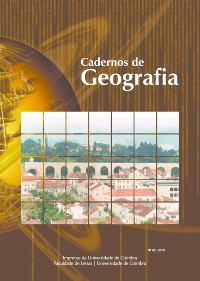Please use this identifier to cite or link to this item:
https://hdl.handle.net/10316.2/47864| DC Field | Value | Language |
|---|---|---|
| dc.contributor.author | El Motaki, Hanifa | - |
| dc.contributor.author | El-Fengour, Abdelhak | - |
| dc.contributor.author | El Bouzidi, Aissa | - |
| dc.date.accessioned | 2020-01-23T14:24:34Z | |
| dc.date.accessioned | 2020-09-22T12:43:44Z | - |
| dc.date.available | 2020-01-23T14:24:34Z | |
| dc.date.available | 2020-09-22T12:43:44Z | - |
| dc.date.issued | 2019 | - |
| dc.identifier.issn | 0871-1623 | - |
| dc.identifier.issn | 2183-4016 (PDF) | - |
| dc.identifier.uri | https://hdl.handle.net/10316.2/47864 | - |
| dc.description.abstract | Na região do Rif, no norte de Marrocos, o clima mediterrâneo e a degradação do ambiente expõem o solo a agentes erosivos intensos, com a mobilização média, em cada ano e por km2, de 2000 toneladas de material inerte. Nestas condições adversas, impõe-se uma correta gestão dos recursos, antecipando os ciclos mais secos e mais húmidos. Neste espaço geográfico, desde os anos (19)60, aplicaram-se diferentes programas de desenvolvimento. No entanto, o problema persiste e agudizou-se mesmo a partir de 1995, com o cultivo de Cannabis (Droga) que se expandiu no setor sul desta região especialmente vulnerável. Este artigo pretende analisar o processo de degradação do solo e discutir o falhanço dos programas e projetos de gestão implantados por diferentes atores nacionais e internacionais, incluindo a União Europeia e as Nações Unidas. | por |
| dc.description.abstract | In the Rif region in northern Morocco, the degradation of the environment exposes the soil to aggressive erosion agents, especially in the Mediterranean climate in which the evacuation of 2000 tons of soil per km2 per year is a basic average. In these difficult environments is necessary to manage the resource effectively by anticipating the situations of dry and wet years. Several development programs have been carried out in the Rif zone since the 1960s and the problem persists, especially with the arrival of the new agriculture of Cannabis (Drug) in 1995 in the southern part of the study area which is characterized by its precarious environmental balance. This paper aims to examine the aspects of soil degradation and analyze the failure factors of the management programs and projects that have been conducted by several national and international stakeholders including the EU and UN. | eng |
| dc.language.iso | eng | - |
| dc.publisher | Imprensa da Universidade de Coimbra | - |
| dc.rights | open access | - |
| dc.subject | soil degradation | eng |
| dc.subject | land management | eng |
| dc.subject | natural resources | eng |
| dc.subject | Rif | eng |
| dc.subject | Morocco | eng |
| dc.subject | degradação do solo | por |
| dc.subject | gestão ambiental | por |
| dc.subject | recursos naturais | por |
| dc.subject | Rif | por |
| dc.subject | Marrocos | por |
| dc.title | Soil degradation in Central Rif mountains area in northern Morocco: aspects of losses and failure of development programs | por |
| dc.title.alternative | Degradação do solo na área montanhosa do Rif Central, no norte de Marrocos: perdas e falhanços dos programas de desenvolvimento | por |
| dc.type | article | - |
| uc.publication.collection | Cadernos de Geografia nº 40 | - |
| uc.publication.firstPage | 53 | - |
| uc.publication.issue | 40 | - |
| uc.publication.lastPage | 66 | - |
| uc.publication.location | Coimbra | - |
| uc.publication.journalTitle | Cadernos de Geografia | - |
| dc.identifier.doi | 10.14195/0871-1623_40_4 | - |
| uc.publication.section | Artigos | - |
| uc.publication.orderno | 4 | - |
| uc.publication.area | Artes e Humanidades | - |
| uc.publication.manifest | https://dl.uc.pt/json/iiif/10316.2/47864/233581/manifest?manifest=/json/iiif/10316.2/47864/233581/manifest | - |
| uc.publication.thumbnail | https://dl.uc.pt/retrieve/11481205 | - |
| item.fulltext | With Fulltext | - |
| item.grantfulltext | open | - |
| Appears in Collections: | Cadernos de Geografia | |
Files in This Item:
| File | Description | Size | Format | |
|---|---|---|---|---|
| soil_degradation_in_central_rif_mountains_area.pdf | 7.24 MB | Adobe PDF |  |
Items in DSpace are protected by copyright, with all rights reserved, unless otherwise indicated.
